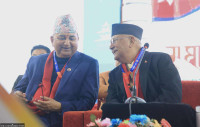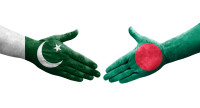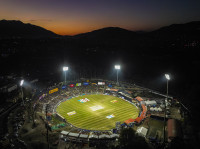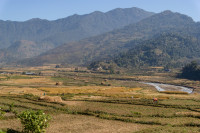Opinion
Nepali theatre in transition
Theatre has gained some momentum in Nepal but it’s still far from winning due recognition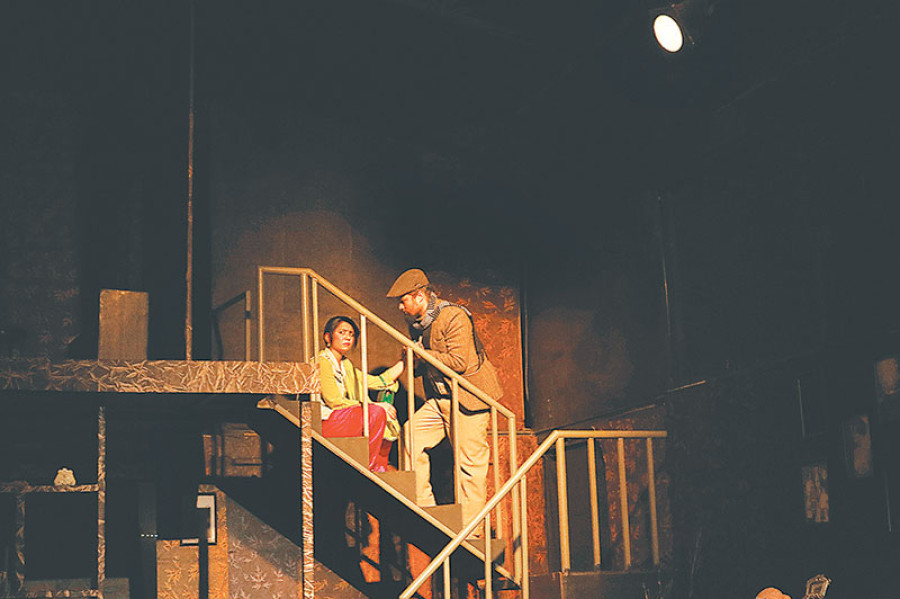
Vinaya Ghimire
Nepal is a culturally rich country. Yet, its literary tradition is poor. Nepali literary tradition is believed to have started after Bhanubhakta started writing in Nepali. Before Bhanubkakta, there was a dearth of literature written in Nepali language. Ancient Nepali literature is rare and even so is the dramatic literature. Texts on Rana era and thereafter (since 1950), are easily available but writings on performative tradition in the beginning of history, seems scarce. Good dramatic literature (plays) does not exist or artistic, original plays are rare. Therefore, many theatre artists and directors have attempted to dramatise novels, poetry and short stories and fill the gap in theatre.
Theatre as an art form
Why does Nepal not have ancient literary heritage, basically in Nepali language, and why there is no dramatic writing, even though some of the dramatic performances are more than 1500 years old? Perhaps, Nepali theatre stands nowhere in the world drama not even in Asia. Or probably foreigners believed that books on Nepali theatre are not saleable. But nothing of this sort has ever been given due attention.
Nepalis on the other hand were more focused on play-writing rather than drama-history. Drama is not only written as text but also as a performance. Yet in the wider context of theatre art, the history of Nepali drama has not been written. Even the tradition of dramatic writing (play) in the native language is a fairly recent phenomenon. However, in recent years the theatre critics, scholars and artistes are writing extensively on traditional and modern theatrical history of Nepal.
Theatre, which is an ancient art form, has gained some momentum in Nepal over the years—mostly amongst the independent theatre groups. However, it is still far from winning due recognition in the Nepali society and Nepali academia. Different types of theatre forms are practiced in Nepal, but theatre as a whole is not as popular as the other art forms or entertainment media. While fine arts like drawing, painting, clay modeling, and performing arts like music, dance are included in university curriculum, theatre does not figure anywhere. In our universities, drama is a part of the literature program. And there seems to be an inexplicable reluctance to consider theatre as a legitimate academic and artistic discipline requiring sustained pursuit and serious theoretical and practical instruction.
With the emergence of various theatre groups, theatre in Nepal has turned a new leaf. Theatre has now succeeded in striking deeper roots in the life of community. It has acquired a distinct, vibrant and exciting personality. These theatre groups not only perform plays, organise workshops and national and international theatre festivals, but also publish dramas and books on theatre history.
Nepali traditional theatrical performances are redefined by privately operated Theatre organisation and Theatre groups. Most of the performances and productions are not geared to the commercial theatre and its demand for formula plays, but aesthetic taste for meaningful performances. They have imaginative settings, aesthetic and historically authentic costumes, artistic and evocative lighting and sound, and greater attention to choreography of movements.
Government endeavors
In order to promote and preserve Nepali performance art, Nepal government has established two organisations, Cultural Corporation and Dance Drama Academy. The objectives of these two government bodies are to provide services like reading materials, script reference, and books on technical knowhow; exchange experience through discussion, workshops for short term trainings, or for experimental productions, sponsor festivals and work in tandem with the theatre groups in the country.
The question of social and political protest and its expression in creative work, or the role of art in revolution or social transformation evokes some spirited discussion in Nepal. Sadly, all that flair related to the arts has now has turned into a bureaucratic complacency and selfish politicking. There seems to be little concern for genuine theatre activity. When asked about the visions of these two organisations, the officials state lack of funds. However, more than funds, it requires the determination and the willpower to get things done.
Nepal government is yet to help and support privately operated Theatre groups. Once, when a highly prominent private Theatre group was shut down, Theatre artists pressurised the government to fund the organisation. Nepal government came to the rescue, and announced financial packages. However, it turned out to be an empty promise as the support never materialised. Now, the prestigious Theatre group is no more in function.
In order to operate and function properly, the theatre art form needs different kinds of skills and specialisations, for instance, light, sound, designer, art director etc. However, in Nepal, most of the theatre groups, directors and theatre persons know little about production design In absence of skilled manpower, it is usually the director who carries most of these special functions of various theatre specialists. The director may also take help from backstage crew.
On a brighter note, despite the lack of support, theatre practitioners have become more creative as their productions have more imagination and freshness. Today, Nepali theatre promoted by the individuals and private companies, have developed native staging styles. They contextualise plays written under an entirely different socio-cultural conditions and aesthetic outlook well. But it is still has a long way to go.
Ghimire is a freelance writer based in Dang




 12.12°C Kathmandu
12.12°C Kathmandu
